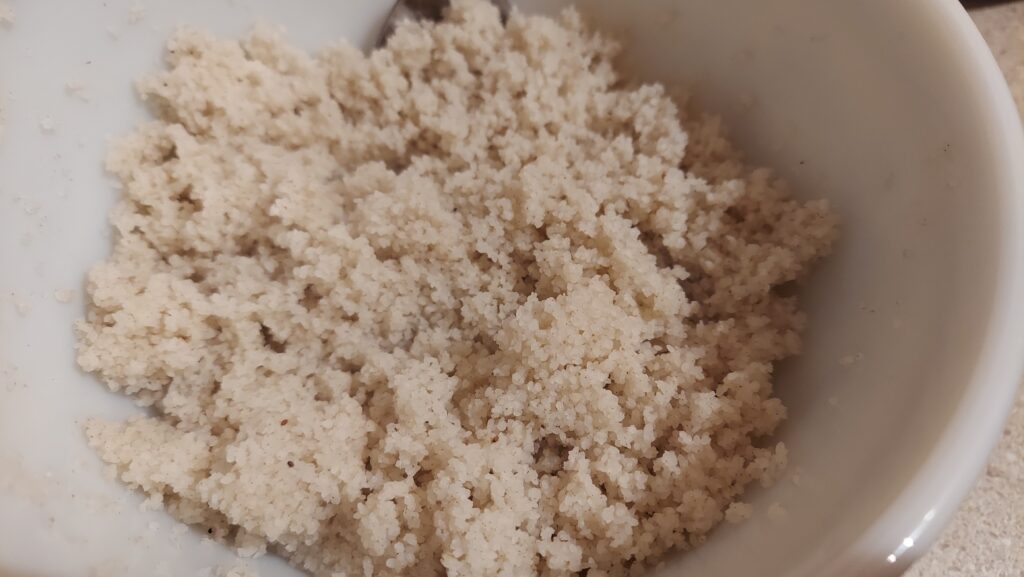Fonio in the Brewhouse: Get the 411
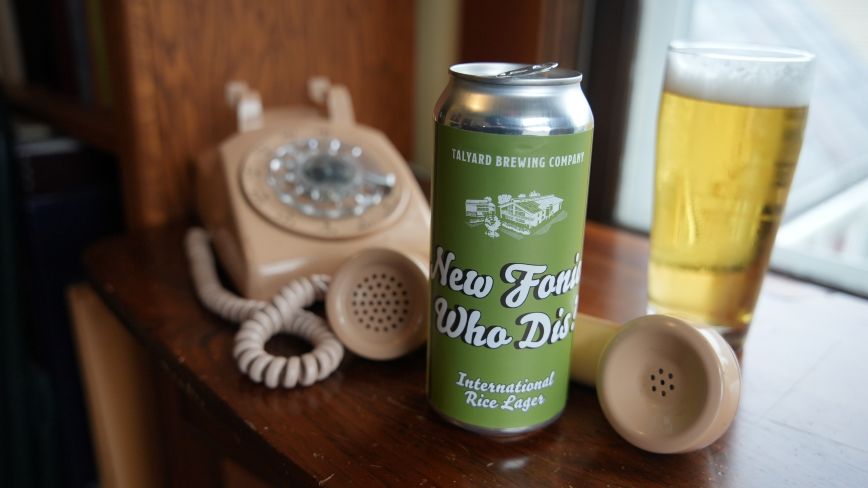
One tiny, ancient grain is transforming not just the flavor of beer, but also some brewers’ outlook on sourcing ingredients. Meet fonio – a centuries-old West African cereal that’s making waves in modern beer with its tropical fruit notes, silky texture, and remarkable sustainability. Easy to brew with and packed with unique flavor, fonio is turning up in everything from lagers to stouts, bringing with it stories of tradition, innovation, and global impact.
RahrBSG is proud to supply Terra Fonio to breweries. We’ve had the pleasure to taste a handful of fonio beers over the past few months, talk with brewers more in-depth about their experience with it, and get advice for the brewhouse. Join us for a sampling!
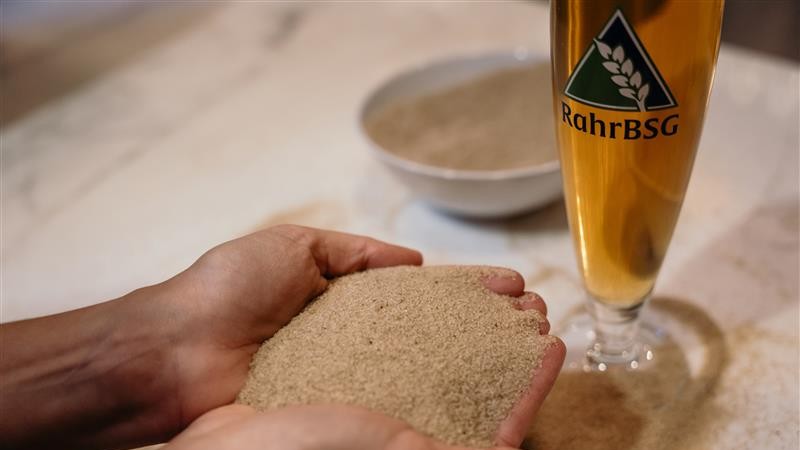
A Quick Intro to Fonio
Fonio is a staple crop in West African countries like Guinea, Nigeria, and Mali, where it has been grown for more than 5,000 years. Prized for its drought resistance and minimal resource requirements, the nutrient-rich grain (technically, a grass) is sustainably farmed and fairtrade certified. At first glance it’s quite curious: the grain is a tiny microbead and looks like fine beach sand. When cooked as foodstuff, it absorbs water and plumps up to almost four times its original size into something that resembles couscous or quinoa. On the plate or bowl, it tastes rather nutty or a bit like Malt-O-Meal, a flavor it brings in smaller amounts to beer. In beers, however, fonio displays aromas of tropical fruit and wine-like flavors reminiscent of Sauvignon Blanc and Gewurztraiminer: white grape, lychee fruit, gooseberry, mango. It can also give a soft, round, silky mouthfeel to beers.
Big Picture: Brewing with Fonio
In the brewhouse, using pre-gelatinized unmalted fonio is simple and straightforward. When included as an adjunct at 10-20% of the grist, it requires no milling or special handling. RahrBSG suggests a usage rate of up to 40% of a grist, though as you’ll see at least one brewery partner – Kiitos Brewing – has pushed it way beyond that limit.
Garrett Oliver might be the most knowledgeable American brewer when it comes to fonio, and he’s introduced countless brewers to its potential. The brewmaster and vice president of production of Brooklyn Brewery not only incorporated the grain into a series of beers at his brewery, but also coordinated the Brewing for Impact initiative which produced seven global collaborations centered around the grain – including everything from Pale Ale to Chocolate Stout, lagers to cask ale.
Oliver says Terra Fonio is very easy to use in brewing because it’s already de-hulled, requires no milling, and has been pre-steamed, so the starch is already gelatinized. “In the brewhouse you’re basically rehydrating it and then going straight into saccharification. We usually add it during the last saccharification rest in the mash; we find that we get the best flavors and aromas that way.” [Ed. note: Other brewers have told us they add fonio with all other grist components for a single infusion mash to wonderful results; choose your own adventure.]
Oliver added that the fonio “signature” flavors are always recognizable, and they don’t seem to be yeast strain-dependent, so the flavors show up as strongly in lagers as they do with warmer fermentations. In a pale ale, those aromatics are a great complement to dry hop aromatics; in a pilsner, they bring a really nice lilt of fruit to the profile.
Oliver’s passion for fonio caught the attention of Isaiah Smith, director of supply chain at Creature Comforts Brewing Co. in Athens, Georgia. Smith said bringing the grain into the brewery was about more than flavor; it was about supporting global agriculture. “By brewing with this product we’re directly supporting the farmers in West Africa, particularly the female farmers who do most of the agricultural work. That’s the sense of community we’re trying to create, as well as more self-sufficiency, growth and development. We’re also honoring the stewards who have kept this 5,000-year-old grain alive and well, so that we can continue to push the boundaries of innovation through brewing science.”

What If We Brewed a 100% Fonio Beer?
To start at the summit of fonio flavor mountain with the most extreme usage of the grain, consider Fonio (5.0% ABV), brewed by Kiitos Brewing in Salt Lake City with 100% Terra Fonio, no hops (zero, zilch, nada!), and fermented with Fermentis SafAle™ US-05. The mission: to understand what fonio brings to the glass on its own. “This was a great opportunity for us and other brewers to understand fonio’s flavor profile,” said Kiitos Director of Brewing Patrick Bourque. “It truly is shocking how many tropical-adjacent notes it brings as a standalone ingredient.”
Kiitos Brewing tackled the challenge of a 100% fonio grist by utilizing its mash press. Bourque says the mashing process with fonio was different because, unlike other alternative grains, fonio tended to sink to the bottom of the mash mixer. To keep it homogenized with mash water they had to run the agitators rather aggressively. “Mash out for us usually looks like large dry squares. The mash pressing of the fonio did not seem to squeeze out the moisture; when we separated the mash filter plates we had something more akin to Malt-o-Meal in between – very wet, very messy. That being said, we saw just as much efficiency from the mash of fonio that we would see in barley or millet.” [Ed. note: Garrett Oliver explained to us that, from his experience in more traditional mash setups, efficiency of fonio was slightly less at 72% versus a more standard 76% for other malts. YMMV.]

Kiitos Fonio stunned attendees at this year’s Craft Beer Conference in Indianapolis, where the beer was the talk of the RahrBSG Village. Even before you tasted the beer its appearance was mind-boggling: water-clear with a bit of cloudy haze, well carbonated with bubbles popping away like champagne.
Bourque got a big kick out of watching the fun, shocked – often very confused – faces of people as they tried it for the first time. “Tasting the beer at our brewery,” he said, “we get a lot of passionfruit, lychee, and white peach. I do think it falls a bit into the sake or soju-like category, or even a hard seltzer that actually has its own character.” Other comments from brewers at CBC ran the gamut from: “Sake meets Sprite!” to “Is this an unfiltered mead?” With its lush, almost creamy coconut milk mouthfeel one person proclaimed it, “a Piña colada if it was a beer.”

When thinking of the next use for fonio in the brewhouse, Kiitos performed bench trials blending Fonio beer into their other beers at different percentages. They found that the tropical flavor carries through even when blended at only 30%, noting that it worked really well blended with a fruity IPA, but seemed to clash when blended with noble-type hop flavors in a Pilsner. “We are moving forward with a 50/50 West Coast style IPA that uses a blend of fonio and Pilsner malt. Hops are going to be Citra and the newly named USDA variety Vera. I think fonio will work well in styles like this that can support tropical-like flavor profiles.”
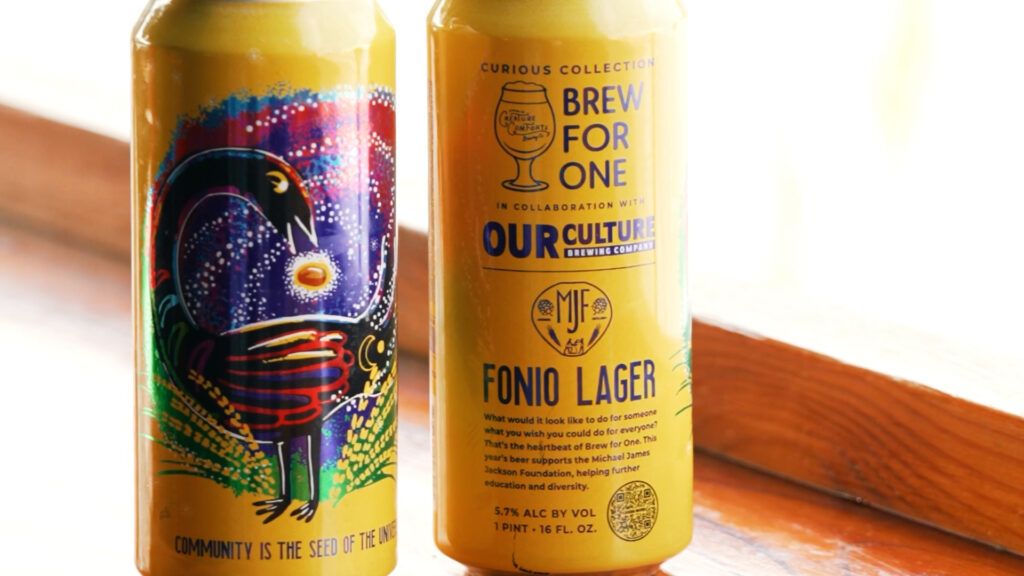
More Than Just a Grain, More Than Just a Beer
Brewing with fonio meant much more than experimenting with a new ingredient for Creature Comforts Brewing Company in Athens, Georgia. As the brewery explains, producing their Brew for One Fonio Lager (5.7% ABV) was a celebration of culture, sustainability, and ingenuity. The beer was a Franconian-style Lager brewed with 20% fonio in collaboration with brewery-in-planning Our Culture Brewing. Released as part of Creature Comforts’s Brew for One series, Fonio Lager’s proceeds benefitted the Michael James Jackson Foundation, a group founded by Garrett Oliver, and named for the world-renowned beer and whiskey writer. Established in 2020, the foundation works to provide funding for technical education and career advancement for Black, Indigenous, and People of Color in the brewing and distilling industries.

Isaiah Smith, the director of supply chain for Creature Comforts (and also CEO of Our Culture Brewing) loved his first taste of a fonio beer by way of Brooklyn Brewery at CBC 2024 in Las Vegas. “I’d never seen that type of flavor expression from a grain before,” he said. “To me this was something new and exciting, but also something very ancient and rooted in African culture. I looked at it as an opportunity to take something that’s been around for thousands of years and bring it into this space where we need more innovation outside of the newest hops or yeast strain.”
When considering how to use fonio in the brewhouse Smith said the collaborators developed a recipe that would be a forum for the grain’s flavor with very little standing in its way. The grist was base malt, a bit of Vienna and the rest of fonio. It was bittered with a neutral hop, plus an aroma addition of Hallertau Blanc hops to support the white wine, gooseberry, and lychee fruit flavors from the grain. The result: a light, crisp, unexpectedly fruit-forward lager that went down very easily. “The response was phenomenal. Between the beer itself – approachable, different but not gimmicky – and the story of this special grain, people were excited to drink the beer and felt very connected to the grain.”

Smith says the closest ingredient he’d compare fonio to in the brewhouse is corn grits, but fonio does have its own unique characteristics to consider when using it. “It has abnormally high betaglucans, so it’s going to thicken up the mash a little bit. Also, fonio absorbs a lot of water for its small size – it expands to about four times its original size when soaked. So, between mash viscosity and water absorption, you have to plan against the possibility of a stuck mash or slow lauter. Traditional brewing techniques – breaking down betaglucans, adding rice hulls, and/or adjusting your water volumes – can easily address these factors. Beyond those considerations it’s very easy to brew with; it’s not complicated at all as long as you know what to watch out for.”
Not to be forgotten or understated in all of this, said Smith, is the global connection of agriculture products (beer, of course, is also an ag product) and the additional economic impact export of fonio provides the West African farming community. “As we look to get more sustainable in our practices across the brewing industry, look no further than this grain that uses less water, and is disease- and drought-resistant. These are huge advantages at a time when we’re feeling more and more pressure related to climate change. I’m not saying it’s going to replace wheat 100%, but there are things like this grain that open up the possibility of new flavors while continuing to be good stewards of the planet.” [Check out this video on Creature Comforts Fonio Lager]

Fonio is Calling. Pick it up!
Curious about pairing fonio with other adjuncts or alternative grains? Ring ring! New Fonio, Who Dis? Is an International-Style Rice Lager from Talyard Brewing Company out of Sugar Land, Texas. The 4.8% ABV beer was brewed with 15% fonio in a grist that also included 10% Crisp Torrefied Flaked Rice, Rahr North Star Pils™, and Rahr Standard 6-Row. “We knew very little about fonio, so we treated it similarly to how we would a cereal grain – like rice, in this case,” said brewer Sean Maloney. “We added the 6-Row for good measure and came out with a bright pale 11.7° Plato wort. The fonio is essentially little starch bombs, lacking husk and diastatic power. We mashed low for fermentability and kept mash pH down with some Weyermann® Acidulated Malt.”
Talyard also used the newer Fermentis SafLager™ E-30 lager yeast, a strain promoted for use in light adjunct lagers for a subtle fruit character. “We added some whole cone American Saaz from our friends at Virgil Gamache Farms for fun and maybe some bio transformation with the yeast known to produce subtle fruity esters,” said Maloney.
Overall tasting notes from the brewery are of a familiar rice lager with some fruity undertones, harmonious flavors between subtle esters from the yeast, zesty Citra hop additions, and lychee from the fonio. “After tasting other fonio beers,” said Maloney, “there is a common characteristic that must be coming from the fonio. I would describe it as a starchy aroma that comes through on the palate as a cereal/grainy note.”
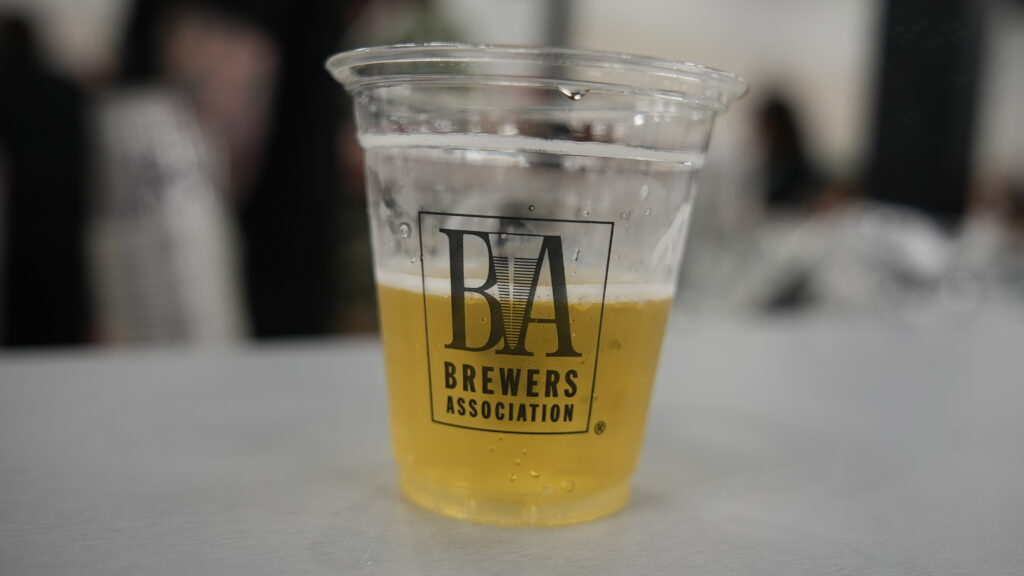
Experimenting with Fonio in the Pint and On the Plate
Russian River Brewing Company has produced at least two fonio beers with research and development headed up by cofounder and brewmaster Vinnie Cilurzo himself on a five-barrel pilot system before scaling up to full brews. “Right now,” Cilurzo said, “we’re still exploring. It’s been a fun process. I could see using it in all kinds of beers, and could probably find a regular beer someday where it would become part of the recipe.”
The brewery’s first fonio beer was a Belgian blonde ale brewed with the grain at about 20% of the grist as part of the Brewing for Impact global collaboration coordinated by Garrett Oliver. “I loved the fruity flavors that it contributed to that beer,” said Cilurzo. “Lychee fruit and white wine qualities like Gewürztraminer and Sauvignon Blanc. It was perfect because when you think of a Belgian ale, you get those really bright fruity notes from the yeast and the ester profile, so those flavors melded really well.”
The brewery’s more recent Fonio Golden Ale, which we had the pleasure to share with Vinnie at CBC, was a 4.5% ABV beer brewed with 25% fonio, Rahr Standard 2-Row, and Rahr White Wheat Malt, and hopped with HVG Hallertau Tradition. It drank crisp – almost champagne-y – bright, slightly tangy, with notes of tropical fruit, orange zest, and melon.
Cilurzo suggests brewers think of fonio like any other adjunct in a grist where it relies on the enzyme package and the high diastatic power from the malt(s) to help get conversion. “If you think about the world of Hazy IPA that we’re in right now, where brewers are routinely using 20% or more of unmalted grains like oats or wheat or maybe some malted wheat mixed in there, fonio isn’t a world different from that.” [Hear more from Cilurzo and Garrett Oliver on fonio in this Craft Beer & Brewing podcast.]
With a love of food as much a part of Russian River’s DNA as its love for beer, Cilurzo gives fonio as much love in the kitchen as he does in the brewhouse; he encourages breweries and brewpubs that serve food to explore dishes with fonio as an ingredient, taking inspiration from quinoa, couscous, and corn grits. Consider pairing dishes with beers made from the grain, or even cook with your fonio beer. It adds even more layers to the story of this unique starch and elevates the beer. “We can absolutely vouch for that,” said Cilurzo. “At both of our pubs it was a great talking point, something our staff had never had before, it aided in more beer sales all around, and customers walked away feeling like they learned something new.”
Drink Locally, Think Globally
We at RahrBSG like to think of fonio as the little grain that could. This minute-grained superfood, cultivated for centuries in West Africa, is an agricultural symbol for self-sufficiency, growth and development. It has now found its way into the hands of inventive brewers around the world to push the boundaries of innovation through brewing science. We’re just at the outset of learning all the ways fonio could impart its fruity flavors to different beer styles. If your brewery uses fonio in the brewhouse, we want to know about it. Please share your experiences with us by tagging @RahrBSG in your brew day photos and video. Happy brewing!
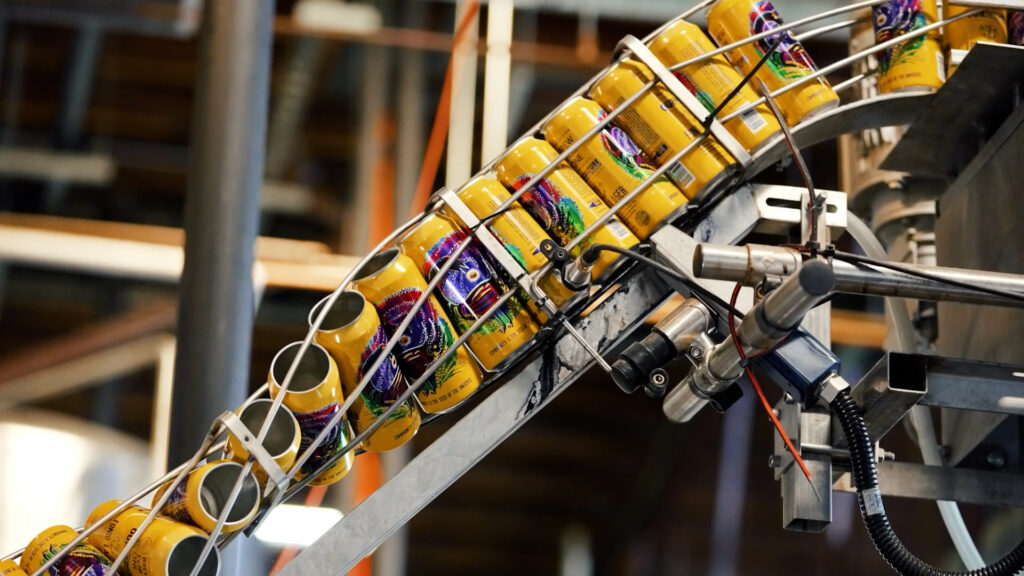
Go Deeper






